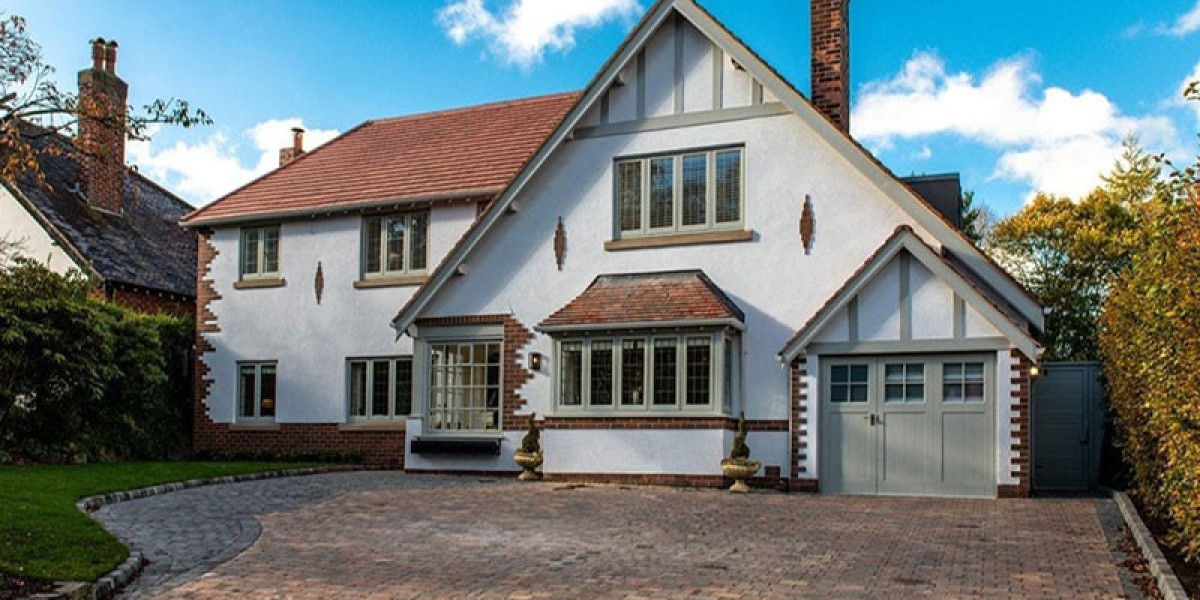In a world where we often find ourselves cocooned in artificial environments, the importance of fresh air can easily be overlooked. Yet, as we hustle through our busy lives—hunched over screens and surrounded by indoor pollutants—the very air we breathe at home can significantly impact our health and well-being. Enter the hero of our story: the air exchange ventilation system. Imagine transforming your living space into a sanctuary filled with crisp, clean air that rejuvenates your body and mind!
How does an Air-Exchange Ventilation System Work?
An Air-Exchange Ventilation System operates by continuously exchanging stale indoor air with fresh outdoor air. This process ensures a constant supply of oxygen while removing pollutants and excess humidity. The system typically uses fans to draw in outside air. As the outdoor air enters, it travels through filters that capture dust, allergens, and other particles.
Once filtered, the fresh air moves into living spaces where it's needed most. Simultaneously, stale indoor air is expelled outside. This exchange keeps energy use efficient without sacrificing comfort. In more advanced systems like HRVs and ERVs, heat recovery mechanisms come into play. They transfer warmth between incoming and outgoing airstreams for improved efficiency during temperature extremes. By maintaining balanced airflow throughout your home, these systems create a healthier atmosphere you can breathe easy in each day.
Importance of Air Exchange System
The air exchange system is an essential component of any home, yet it is often overlooked or misunderstood. This system ensures that the air in your home is constantly circulating and being refreshed, providing a healthy and comfortable living environment for you and your family. In this section, they will discuss the importance of having an air-exchange system in your home.
Improves Indoor Air Quality
The primary function of an air-exchange system is to bring fresh outdoor air into your home while simultaneously removing stale indoor air. This constant circulation helps to remove pollutants, allergens, and other harmful particles that may be present in the indoor air. With improved indoor air quality, you can breathe easier and reduce the risk of respiratory issues.
Reduces Moisture Levels
Excess moisture levels in a home can lead to mold growth, which can cause health problems and damage to the structure of your house. An air-exchange system helps to remove excess humidity from the indoor air by replacing it with drier outdoor air. This not only prevents mold growth but also protects your furniture and belongings from moisture damage.
Eliminates Odors
A well-functioning ventilation system removes unwanted odors from cooking, pets, chemicals used in cleaning products, etc., ensuring that your home smells fresh at all times. It also reduces the build-up of volatile organic compounds (VOCs), which are released from various household items such as carpets, furniture polish, paint fumes, etc., contributing to better indoor air quality.
Saves Energy and Money
One of the key benefits of incorporating an air-exchange ventilation system into your home is its ability to save both energy and money. Traditional heating and cooling systems can be notorious for driving up electricity bills, but an air-exchange system offers a more efficient and cost-effective solution.
Firstly, an air-exchange ventilation system helps to regulate the temperature in your home by removing excess heat or cold from the incoming fresh air. This means that during the summer months, when outside temperatures are high, the incoming air will be cooled down before entering your home. Similarly, during winter months, the system will preheat the incoming air before distributing it throughout your home. By doing this, less strain is placed on your heating and cooling systems, resulting in lower energy consumption and ultimately reducing your utility expenses.
Additionally, these systems also feature a heat recovery mechanism that allows for the transfer of heat between outgoing stale air and incoming fresh air. This means that instead of expelling all of the warm or cool air from inside your home directly outside, it is used to adjust the temperature of the incoming fresh air. As a result, less energy is required to reach and maintain a comfortable temperature within your home.
Value of Having an Air Exchanger
The value of having an air exchanger in your home cannot be overstated. This essential ventilation system not only helps to improve the indoor air quality, but also has a number of other benefits that make it an invaluable addition to any household.
First and foremost, an air-exchanger helps to circulate fresh outdoor air into your home while simultaneously removing stale and contaminated indoor air. This constant exchange of air prevents the buildup of pollutants, allergens, and other harmful particles that can lead to respiratory issues and other health problems. It also eliminates excess moisture which can cause mold growth and structural damage over time.
In addition to improving the overall indoor air quality, an air-exchanger also helps to regulate humidity levels in your home. In humid climates, this is especially important as excessive moisture can create the perfect breeding ground for mold and mildew. On the other hand, in drier climates, an air-exchanger can help add much-needed moisture to the air during winter months when heating systems can dry out the environment
Increases Comfort and Productivity
Breathing in fresh air can significantly enhance your comfort at home. An Air-Exchange Ventilation System ensures that the air circulating within your living spaces is clean and invigorating. This reduces feelings of stuffiness often experienced in tightly sealed homes. When indoor air quality improves, so does your overall mood. Fresh air stimulates mental clarity, making it easier to focus on tasks or enjoy leisure activities without distraction.
Moreover, a well-ventilated environment creates an atmosphere conducive to productivity. Whether you’re working from home or tackling household projects, good airflow helps maintain energy levels throughout the day. Comfort extends beyond just temperature regulation; it encompasses how we feel in our personal space. A system dedicated to providing a consistent flow of fresh air contributes not only to physical health but also nurtures emotional well-being by creating a more enjoyable living experience.
Air Exchange Unit Promotes a Healthy Living Environment
An air exchange unit, also known as an air-exchange ventilation system, is a crucial component in promoting a healthy living environment in your home. This system works by continuously bringing in fresh outdoor air while removing stale indoor air, helping to maintain proper ventilation and circulation within your home.
One of the main benefits of an air-exchange unit is its ability to improve indoor air quality. Indoor spaces can often become polluted with contaminants such as dust, pet dander, and chemicals from cleaning products. Without proper ventilation, these pollutants can accumulate and lead to respiratory issues and allergies for you and your family. An air-exchange unit effectively removes these harmful particles from your home and replaces them with fresh, clean outdoor air.
Moreover, an air-exchange unit helps regulate humidity levels in your home. High humidity can lead to the growth of mold and mildew which can cause health problems. On the other hand, low humidity levels can cause dry skin and respiratory irritation. The constant flow of fresh air provided by an air-exchange unit helps balance out the humidity levels in your home, creating a comfortable living environment for you and your loved ones
Function of Whole House Air Exchanger
The function of a whole house air exchanger is to improve the indoor air quality by constantly exchanging stale, polluted indoor air with fresh outdoor air. It works by extracting the stale air from inside the home and replacing it with clean, filtered outdoor air. This process helps to maintain a continuous flow of fresh air throughout the house, creating a healthier and more comfortable living environment.
One of the main functions of a whole-house exchanger is to remove harmful pollutants from indoor air. Indoor pollution can come from various sources such as cooking fumes, cleaning products, pet dander, and even building materials. These pollutants can cause respiratory problems, allergies, and other health issues if not properly addressed. The constant exchange of fresh outdoor air helps to reduce these pollutants and keep them at safe levels.
Another important function of a house exchanger is humidity control. High levels of humidity in a home can lead to mold growth, which can be hazardous to both the occupants' health and the structural integrity of the building. An efficient ventilation system helps to regulate humidity levels by removing excess moisture from the indoor air and replacing it with drier outdoor air.
Creating a Comfortable Living Environment
Creating a comfortable living environment is crucial for any homeowner, as it directly affects the well-being and quality of life for those residing in the space. While many factors contribute to a comfortable home, one aspect that often gets overlooked is proper ventilation. This is where an air-exchange ventilation system comes into play.
An air-exchange ventilation system works by continuously removing stale indoor air and replacing it with fresh outdoor air. This process not only improves indoor air quality but also helps regulate temperature and humidity levels, creating a more comfortable living environment.
One of the main benefits of having an air-exchange ventilation system is improved indoor air quality. Without proper ventilation, pollutants such as dust, smoke, and allergens can accumulate within the house, leading to potential health hazards for occupants. By exchanging stale indoor air with fresh outdoor air, an air-exchange system helps remove these harmful particles from the home, promoting better respiratory health for all residents.
Conclusion
In conclusion, an air exchange ventilation system is an essential component for maintaining a healthy and comfortable living environment in your home. Not only does it provide fresh, clean air to breathe, but it also helps regulate temperature and moisture levels. With these benefits in mind, investing in an air-exchange system is a wise choice for any homeowner looking to improve their indoor air quality and overall well-being. So don't wait any longer, make the switch to an air-exchange ventilation system today and start enjoying the many advantages it has to offer.
FAQS
What Is An Air Exchange Ventilation System?
An air-exchange ventilation system is a mechanical system installed in buildings to provide fresh air and remove stale, polluted air. It consists of fans, ducts, and vents that help circulate the air from inside your home to the outside and vice versa.
Why Is It Essential For My Home?
An air-exchange ventilation system is essential for your home because it helps maintain proper indoor air quality. Without proper ventilation, your home can become a breeding ground for harmful pollutants such as dust, mold, and bacteria which can have adverse effects on your health.
How Does It Work?
Air-exchange systems use two different methods to replace indoor air with fresh outdoor air - exhaust-only or balanced systems. The exhaust-only method uses fans to push out stale indoor air while drawing in fresh outdoor air through natural cracks and openings in the building's structure. On the other hand, balanced systems use equal amounts of incoming and outgoing airflow using separate supply and exhaust fans.
Related Business Listings |







